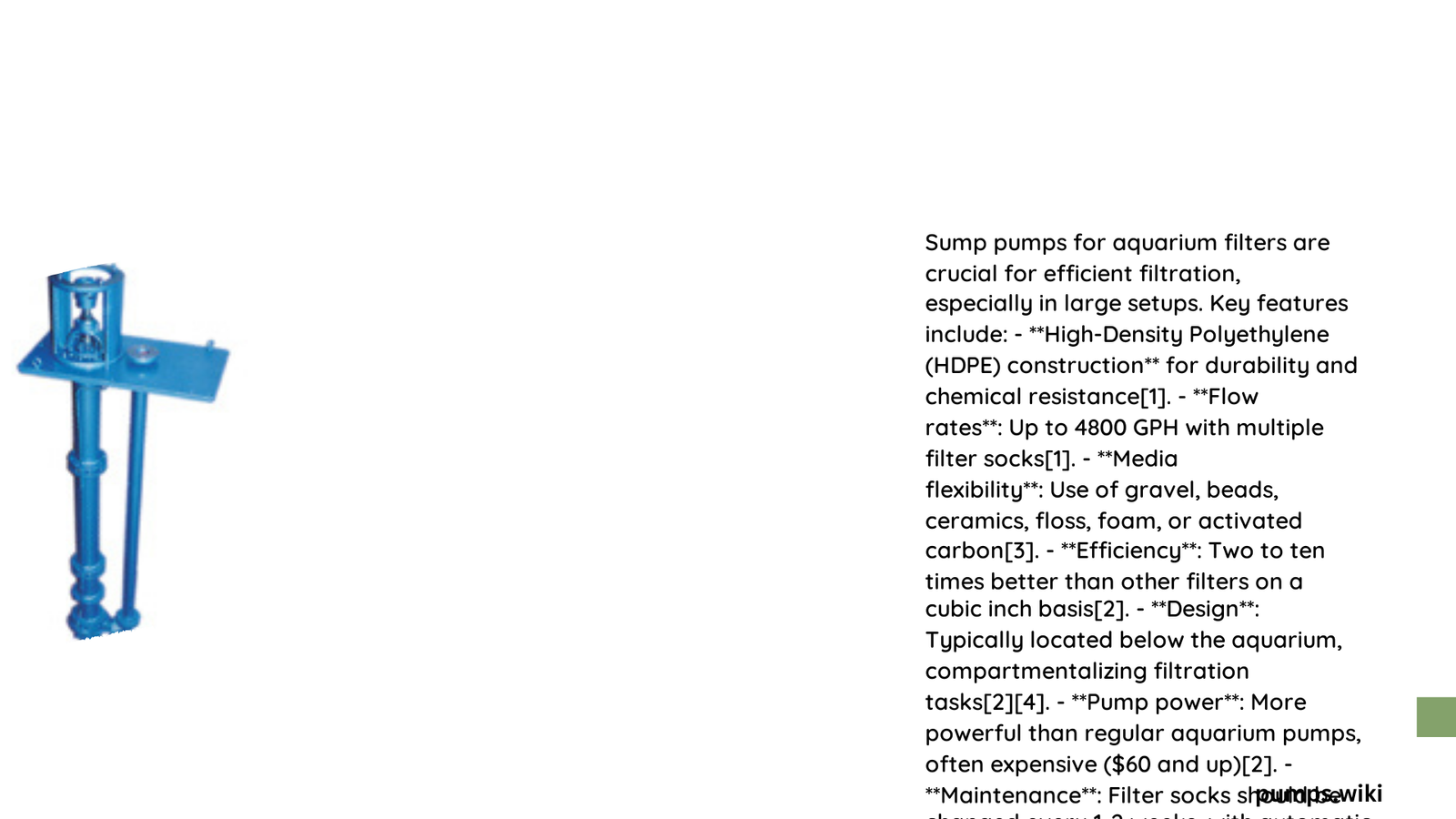Sump pump aquarium filters are advanced filtration systems that provide superior water quality and increased water volume for aquariums. These systems consist of a separate tank (sump) placed below the main aquarium, housing various filtration media and equipment. Sump filters offer enhanced biological filtration, improved oxygenation, and greater flexibility in equipment placement compared to traditional canister or hang-on-back filters.
What Are the Key Components of Sump Pump Aquarium Filters?
Sump pump aquarium filters typically include the following components:
- Sump tank (usually 25% or more of the main tank’s volume)
- Overflow system (internal or external)
- Return pump
- Filtration media (mechanical, biological, and chemical)
- Baffles or dividers
- Plumbing (PVC pipes, fittings, and valves)
How Do Sump Pump Aquarium Filters Work?

Sump pump aquarium filters operate on a simple yet effective principle:
- Water flows from the main tank into the sump via an overflow system.
- The water passes through various filtration stages in the sump.
- A return pump sends the filtered water back to the main tank.
This continuous cycle ensures efficient filtration and maintains optimal water quality.
What Are the Benefits of Using Sump Pump Aquarium Filters?
Sump pump aquarium filters offer several advantages:
- Increased water volume, improving stability
- Enhanced biological filtration
- Flexible equipment placement
- Improved gas exchange and oxygenation
- Ability to hide equipment, creating a cleaner look
- Customizable filtration options
How to Install a Sump Pump Aquarium Filter?
Installing a sump pump aquarium filter requires careful planning and execution. Here’s a step-by-step guide:
- Select and position the sump
- Install the overflow system
- Plumb the system
- Divide the sump into chambers
- Install filtration media
- Set up the return pump
- Add safety features (check valves, vacuum break holes)
What Maintenance Is Required for Sump Pump Aquarium Filters?
Regular maintenance is crucial for optimal performance:
- Clean or replace mechanical filtration media weekly
- Rinse biological media as needed (typically every few weeks)
- Check and clean the pump regularly
- Inspect and clean sump chambers to prevent debris buildup
- Monitor and adjust flow rates as necessary
How to Choose the Right Sump Pump Aquarium Filter?
Consider the following factors when selecting a sump pump aquarium filter:
- Tank size and volume
- Desired flow rate (typically 3-5 times total tank volume per hour)
- Available space for sump placement
- Specific filtration needs (e.g., heavy bioload, sensitive species)
- Budget constraints
What Are Common Challenges with Sump Pump Aquarium Filters?
While effective, sump pump aquarium filters can present some challenges:
- Potential for flooding if not properly designed or maintained
- Noise from water flow and pumps
- Initial complexity in setup and plumbing
- Higher upfront costs compared to some other filter types
How to Troubleshoot Sump Pump Aquarium Filter Issues?
Common issues and their solutions include:
| Issue | Possible Cause | Solution |
|---|---|---|
| Low flow rate | Clogged media or plumbing | Clean or replace media, check for blockages |
| Flooding | Overflow system failure | Inspect and repair overflow, check valves |
| Excessive noise | Air in the system, pump issues | Bleed air from lines, check pump for damage |
| Poor water quality | Inadequate filtration | Adjust media, increase flow rate, check for dead spots |
What Are the Costs Associated with Sump Pump Aquarium Filters?
Costs can vary widely depending on the setup:
- DIY sumps: $50-$200+ (excluding pump)
- Commercial sumps: $200-$1000+
- Return pumps: $60-$500+
- Plumbing and accessories: $50-$200+
Long-term costs include electricity for pump operation and periodic media replacement.
How Do Sump Pump Aquarium Filters Compare to Other Filtration Methods?
Sump pump aquarium filters offer several advantages over other methods:
- Greater water volume than canister or HOB filters
- More customizable than all-in-one systems
- Better biological filtration than most other methods
- Improved gas exchange compared to closed systems
- Ability to incorporate various equipment (protein skimmers, reactors)
However, they require more space and initial setup complexity than some alternatives.
